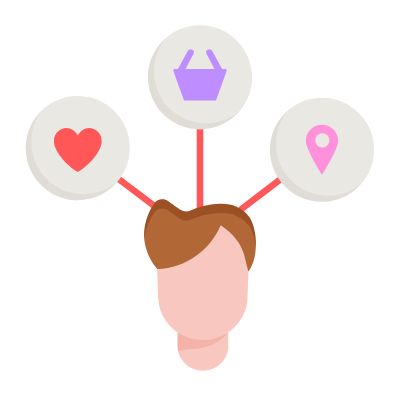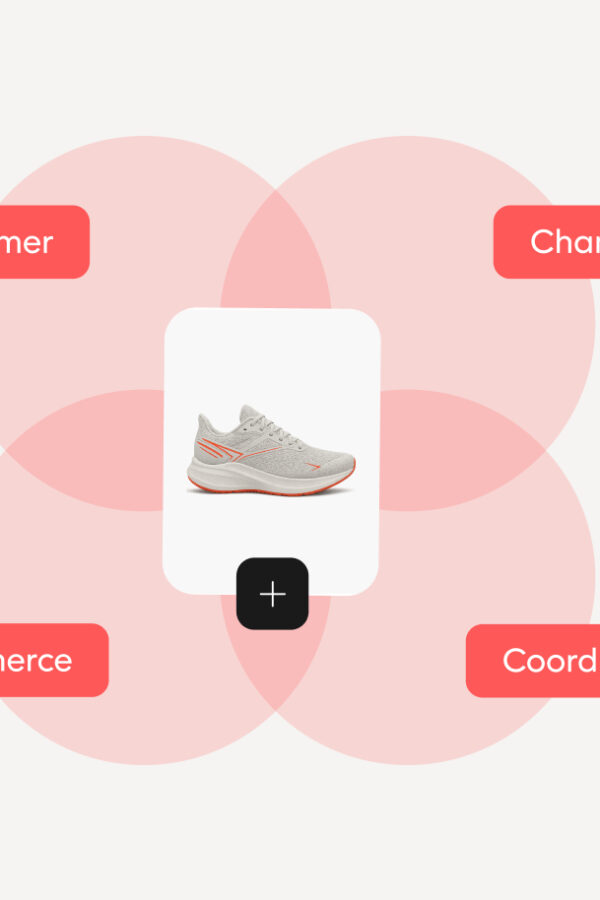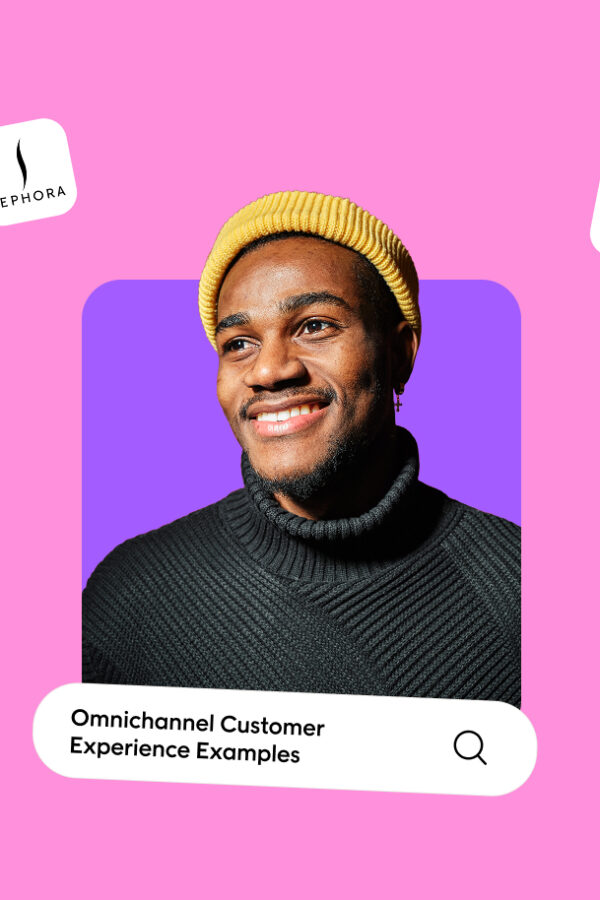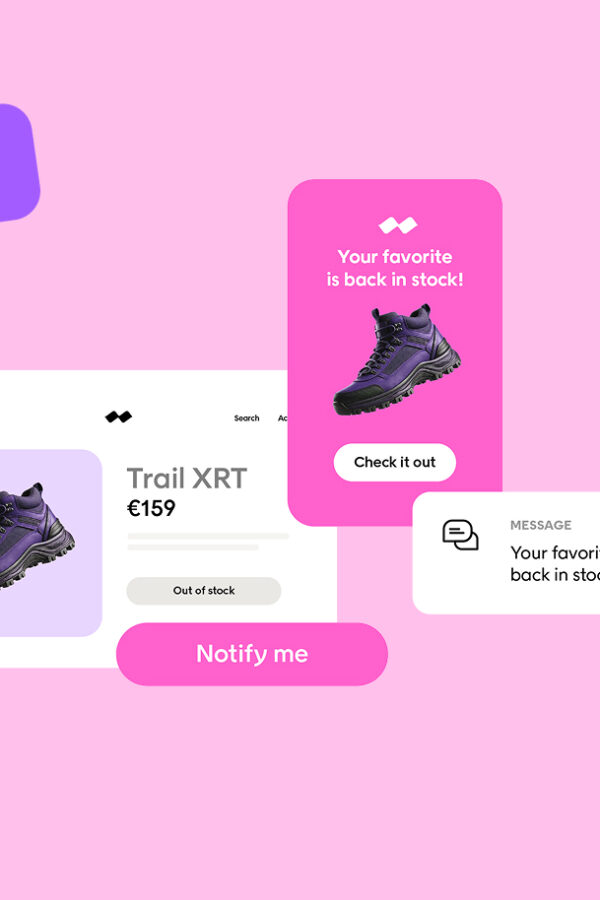In 2025, customers expect tailored, relevant experiences across every touchpoint. Whether they’re browsing online, using mobile apps, or shopping in-store, retail brands need to meet rising expectations with personalized customer experiences.
The payoff is big: higher customer satisfaction, stronger loyalty, and longer customer lifetime value. But delivering personalization at scale is tough. Fragmented systems, siloed data, and outdated tools slow everything down.
This blog shows you how to close the retail personalization gap with scalable strategies, AI, and automation—and how Voyado makes it easier to create experiences that convert.
We know you’re busy. Here are the key takeaways:
- Retail personalization improves customer experience, increases conversions, and drives long-term customer loyalty.
- Most retailers struggle with siloed data, slow workflows, and outdated tools, creating a gap between customer expectations and actual delivery.
- Unified customer profiles and AI-powered segmentation enable real-time, scalable personalization across email, SMS, mobile apps, and in-store channels.
- A strong personalization strategy increases average order value, enhances brand loyalty, and improves retention by tailoring offers to individual customers.
- Voyado is your strategic advantage because personalization is no longer overwhelming.
- This is only the beginning. Retailers who invest now will be ready for what’s next.
So why is personalization becoming non-negotiable in retail? Let’s start with what’s driving the shift.
Why personalization matters more than ever in retail
Personalization isn’t optional anymore. It’s a baseline expectation, and the retailers who deliver it see real business results.
Today’s shoppers want more than products. They want experiences tailored to their needs, behaviors, and preferences.
Whether they’re browsing online, talking to store associates, or moving between mobile apps and physical stores, they expect to be treated as individuals.
And the numbers back it up. Brands that invest in personalized customer experiences see:
- Higher conversion rates
- Increased customer satisfaction
- Stronger customer retention
- Greater brand loyalty
- Longer customer lifetime value
According to McKinsey, companies that excel at personalization generate 40% more revenue from those activities than average performers. It’s not just a feel-good tactic. Personalization directly impacts growth and profitability.
In-store personalization also plays a critical role. When retail teams have access to real-time customer insights, every interaction becomes more helpful and relevant, not just another sales pitch.
So what’s stopping more retailers from delivering these results at scale? Let’s take a look at the most common roadblocks.
The challenges of scaling personalization in retail
Most retailers want to deliver personalized experiences. The problem is turning that ambition into something scalable, consistent, and effective across all touchpoints.
Here’s where things tend to break down:
Siloed customer data
Customer data is often scattered across e-commerce platforms, loyalty programs, marketing tools, and point-of-sale systems. Without a centralized customer data platform, it’s nearly impossible to get a comprehensive understanding of customer behavior or preferences. That gap makes it harder to segment customers, predict intent, or personalize in the moment.
Disconnected teams and systems
Marketing, CRM, e-commerce, and retail ops often work in parallel, but not always in sync. When each team uses different systems or follows different goals, you get duplicated work, inconsistent customer experiences, and missed opportunities.
Outdated technology
Legacy systems weren’t built for the speed and flexibility modern personalization requires. Many retailers still rely on static segmentation and batch email blasts instead of using marketing automation tools or machine learning to power real-time personalization.
Guesswork over insights
Basic segments like “email openers” or “frequent buyers” are a start, but they don’t account for customer expectations or journey context. Without predictive analytics or customer feedback loops, teams end up guessing, and those guesses rarely hit the mark.
Slow execution
Even if the data exists, acting on it fast enough is another hurdle. By the time you pull a report, create a segment, and launch a campaign, your customer may have already moved on.
Scaling personalization doesn’t mean more manual work. It means smarter systems, better data flow, and tools that enable retailers to move fast and personalize with precision.
Let’s take a look at what that looks like in action.
What scalable retail personalization looks like in 2025
Scaling personalization doesn’t mean adding more manual work. It means building a system that learns, adapts, and delivers relevant customer experiences at every step of the journey. The most successful retail brands are already making this shift.
Here’s what they’re doing and how Voyado supports it:
Unified customer profiles
Everything starts with a single view of the customer. That means combining purchase history, website activity, loyalty status, and store interactions into one unified customer profile. This creates a foundation for more precise segmentation and smarter personalization strategies.
Example: A shopper browses dresses online, checks local stock in a mobile app, and completes the purchase in-store. With Voyado, all that data is captured in one place, making future recommendations and follow-ups more relevant.
Automated omnichannel journeys
Modern personalization techniques require more than email. Leading retailers use SMS, mobile apps, in-store interactions, and web personalization to deliver a unified customer experience. These journeys are powered by marketing automation tools that react to real customer behavior, not just pre-set rules.
Example: A customer joins a loyalty program in-store, receives an email follow-up, a product reminder via SMS, and a personalized discount the next time they visit your site—all triggered automatically through Voyado.
Predictive segmentation and real-time decision-making
Advanced personalization capabilities allow brands to move beyond historical behavior. With AI and predictive analytics, you can segment customers based on future actions, churn risk, or potential lifetime value.
Example: A high-value customer is predicted to lapse. They’re automatically enrolled in a win-back campaign tailored to their preferences and purchase history.
Personalization without complexity
Scaling doesn’t require a massive team. With tools like Voyado, marketers can build entire journeys across multiple touchpoints using pre-built templates, plug-and-play logic, and intuitive interfaces. It’s faster, smarter, and designed for retail.
Example: A marketer builds a holiday campaign that includes targeted product modules, email flows, and in-store offers, all without writing a single line of code.
These are not future concepts. They’re already delivering results for retailers today. Now let’s look at some real-world examples that prove just how powerful retail personalization can be.
Personalization in retail that works: Example case studies
Retailers across the industry are raising the bar with creative, effective personalization strategies. These examples show how small shifts can lead to big wins in customer engagement, loyalty, and conversion.
1. Behavioral email and SMS flows
Triggered messages based on customer actions—like abandoned carts, first purchases, or lapsing activity—consistently outperform generic campaigns. These flows are powered by customer insights and make each message feel like a helpful reminder, not a sales push.
Case study: A shopper who browses winter boots receives a timely SMS with a limited-time offer. A follow-up email offers matching accessories based on their previous purchase history.
2. Dynamic website personalization
Online retail personalization lets your website respond to individual customer behavior in real time. With the right tools, homepage banners, product recommendations, and category placements can all shift based on browsing history, location, or loyalty tier. These tactics help improve on-site personalization.
Case study: A returning customer sees products they’ve previously viewed, a personalized discount banner, and new arrivals based on their preferences.
3. In-store loyalty interactions
When store associates have access to unified customer profiles, in-store experiences become more tailored. Upsells, offers, and service interactions feel personal rather than generic.
Case study: A loyal customer enters a store and receives a personalized discount at checkout, based on their loyalty status and recent purchases.
4. Real-world results from personalized experiences
Personalization isn’t just about feel-good moments. It drives measurable outcomes.
Here’s what customer loyalty and revenue data says:
- 3.1% increase in average order value
- 40% higher discount redemption
- 12.3% lower online return rates
These personalized shopping experiences also lead to a more loyal customer base and longer customer lifetime value. When personalization is built into the loyalty program, it becomes easier to reward the right customers at the right time.
These results are not the exception.
They’re a preview of what’s possible when customer interactions are driven by insights, not guesswork. Next, we’ll explore how AI brings all of this to life at scale.
How AI powers next-level personalization
AI is transforming retail personalization, making it faster, smarter, and more scalable. With the right tools, retailers can stop relying on assumptions and start delivering meaningful experiences that adapt in real time.
Smarter segmentation and predictions
AI in retail enables predictive segmentation based on customer behavior, preferences, and likely future actions. Instead of targeting based on past purchases alone, you can anticipate churn risk, calculate lifetime value, and deliver timely interventions that make a real impact.
AI-generated content and recommendations
Product suggestions, email copy, and website content can all be dynamically tailored using AI. This level of personalization goes far beyond static campaigns, helping each customer feel understood without adding manual work for your team.
Optimized timing and frequency
AI can determine not only what to send, but also when and how often. Learning from engagement patterns helps avoid over-messaging while maximizing click-through and conversion rates.
Retail-ready automation with Voyado
Voyado’s predictive engine is built for retail. It uses artificial intelligence to create personalized communication across both store and web, powered by first-party data and designed to boost customer satisfaction, retention, and loyalty. Teams can act quickly, personalize at scale, and stay ahead of customer expectations.
With these capabilities in place, the next step is building a strategy that makes personalization consistent, cross-functional, and easy to manage.
Building a personalization strategy that scales
You don’t need a huge team or endless resources to personalize effectively. What you do need is a clear strategy, the right data foundation, and tools that remove friction from execution. Here’s how leading retail brands make it work.
Centralize your customer data
Personalization starts with unified data. Bring together ecommerce activity, loyalty interactions, in-store behavior, and marketing engagement in one customer data platform. A unified customer profile is the foundation for consistency across every channel.
Define priority journeys
Focus on the moments that matter most—welcome flows, loyalty tier changes, reactivation campaigns, and post-purchase experiences. You don’t need dozens of journeys. Start with the ones that directly impact conversion, engagement, and loyalty.
Align your teams around shared goals
Marketing, ecommerce, and CRM teams all need to work from the same playbook. When everyone shares a clear view of the customer, it becomes easier to segment, target, and measure success across touchpoints.
Automate, test, and iterate
Use marketing automation tools to streamline campaigns, then test and optimize continuously. With real-time insights from platforms like Voyado, your team can adapt fast without having to start from scratch.
How Voyado helps
Voyado simplifies every step of the personalization process. From intuitive automation builders to plug-and-play templates and advanced personalization capabilities, the platform helps teams personalize marketing campaigns based on customer behavior—quickly, confidently, and at scale.
(For more inspiration, see how fashion brands lead the way in personalization.)
With the strategy in place, the next question is when to start. The answer? Now. Let’s wrap up with why timing matters.
Final thoughts: Why now is the time to scale personalization
Customers expect every interaction to feel relevant, whether they are shopping online, visiting a physical store, or switching between channels.
The good news? The tools are here, and the payoff is real.
Retailers who scale their personalization efforts today are seeing:
- Increased customer satisfaction
- Longer customer lifetime value
- Stronger brand loyalty
- Higher conversion rates
- Lower churn and better retention
Meanwhile, competitors are already investing in retail media networks, customer data platforms, and marketing automation to create personalized shopping experiences that adapt in real time. Brands that delay risk falling behind.
With Voyado, you can unify your data, personalize marketing campaigns based on customer behavior, and deliver tailored experiences across web and store without complexity or code.
This is not just a passing trend. It’s only the beginning of how customer expectations will shape the future of retail.
Ready to make personalization your competitive edge?
Book a demo and see how Voyado helps retailers scale personalization with confidence.
FAQ: Personalization in retail with Voyado
What is personalization in retail, and why does it matter in 2025?
Personalization in retail means tailoring the shopping experience to each individual customer’s preferences and behavior. In 2025, this is essential because customers expect relevant, connected experiences across every channel. Brands that meet those expectations see stronger loyalty, higher satisfaction, and more long-term value.
What are the biggest challenges in scaling retail personalization?
The biggest challenges include scattered data, outdated systems, manual workflows, and disconnected teams. Without a central view of the customer, it becomes difficult to segment effectively or personalize in real time.
How does Voyado help retailers deliver hyper-personalized experiences?
Voyado enables hyper-personalization by combining first-party data into unified customer profiles and powering automation across email, SMS, web, and in-store. Its predictive tools allow you to tailor campaigns based on real behavior, preferences, and intent, without needing technical support.
Can Voyado personalize both online and in-store experiences?
Yes, Voyado supports omnichannel personalization across digital and physical touchpoints. Whether customers are browsing on your website, checking stock in a mobile app, or redeeming a loyalty offer in-store, their experience remains consistent and relevant.
How can retail brands get started with personalization using Voyado?
Retailers can get started by centralizing customer data, identifying key journeys like onboarding and reactivation, and aligning internal teams. With Voyado’s automation tools and templates, you can quickly launch, test, and scale personalized campaigns based on real customer behavior.
What are some real examples of personalization in online retail?
Examples of online retail personalization include dynamic content and messaging tailored to the individual. Some common tactics are:
- Cart abandonment reminders via email or SMS
- Personalized product recommendations on landing pages
- Discount banners based on loyalty status
- Recently viewed item modules
- Upsell offers based on browsing behavior
These techniques help convert visitors and deepen engagement.
What are the benefits of personalization in retail?
Personalization in retail leads to higher customer satisfaction, stronger loyalty, and increased revenue. It also improves retention, boosts average order value, and makes marketing more efficient.
How is hyper-personalization different from traditional personalization?
Hyper-personalization uses real-time data and predictive analytics to create more precise, behavior-driven experiences. Instead of relying on basic segments or demographic data, it adapts to each customer’s recent actions, preferences, and intent signals.
What role does a customer data platform play in retail personalization?
A customer data platform (CDP) helps retailers unify information from multiple sources, build accurate segments, and activate personalization across touchpoints. It ensures that marketing efforts are informed by a complete view of each customer.
Why does omnichannel personalization matter in 2025?
Omnichannel personalization is important because customers move between devices and channels throughout the buying journey. With the right strategy and tools, retailers can deliver seamless, personalized experiences across web, mobile, email, and in-store—building stronger relationships and increasing customer lifetime value.










